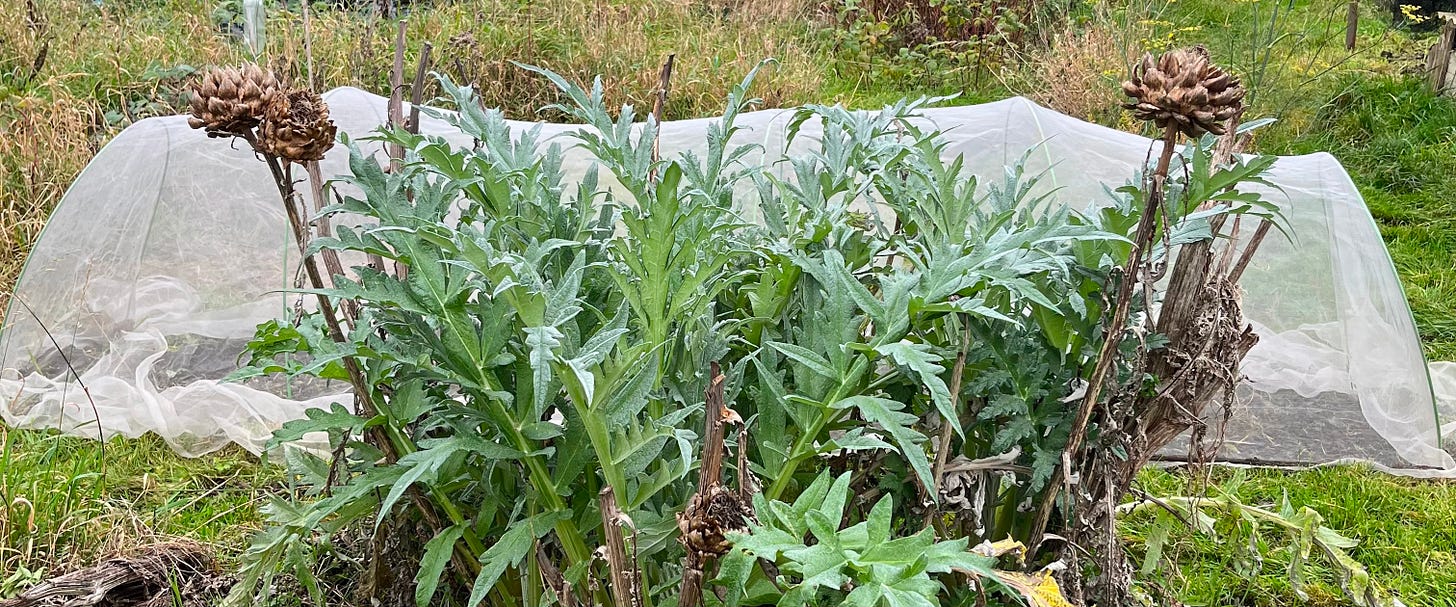11.11.25
in the soil
The sky threatens rain although not with much conviction and in any case it is still unseasonably warm enough to give the few drops that do come a welcome freshness in contrast, wrapped up and slightly sweaty as I am, giving the soil one last going-over before the broad beans go in. In my memory one of the most reliable allotment crops, the last few years have seen the autumn-sown beans
infested with blackfly or
mauled by slugs or
(struck down by hubris) grown so large that the first frost knocked them over or
simply eaten by mice before they even had a chance to grow
and so I almost don’t bother this year but why not I think, I have a spare bed for the winter and there are worse ways to spend my time than feeding mice although I do (following advice seen on Instagram) cover the bed over with fine mesh well held down at its edges, the mice should at least have a bit of a challenge.

in the kitchen
One of my colleagues runs a small urban winery and (upon request) has given me rather more of their spent pomace than I know what to do with, after a small test I fill a huge pan with about half of the red pomace (pinot noir I think) and cover it with water and boil it for hours, strain the resulting juice through a cheesecloth and mix it with sugar and boil the hell out of it to make a kind of grape molasse, some of the rest I put in one of the buckets I use to make nocino and cover with water and chuck in a bag of sugar to referment (hopefully) into piquette, a the last little bit goes into a jar with more water with the vague plan to make it eventually into a film developer – the Chardonnay pomace I have a more definite use for, namely packing turnips into and covering the lot with brine to ferment for a month into brovada, Friuli’s sort-of answer to sauerkraut. I came across this in a multi-volume encyclopaedia of Italian food that my mother-in-law has and was fascinated to find a European equivalent – the only one I’m aware of – to the various paste-based pickles of Japan, where vegetables are packed in miso or sake lees or a specially prepared bed of bran and bacteria to be excavated and brushed off when ready and eaten or (in the case of brovada) grated and cooked into soups and stews.
on the page
Having accidentally started a sort of one-man Fitzcarraldo fan club and having loved her first book Dandelions I have just started reading Thea Lenarduzzi’s The Tower and am fully engrossed in its strange not-quite-storytelling, its pulling away at the threads of an anecdote to look at what it is made of – non-fiction is rarely so ready to engage with the contradictions and mess of reality, the unknowability of it.


fiction faction not-quite-storytelling is the way to go, Thom.